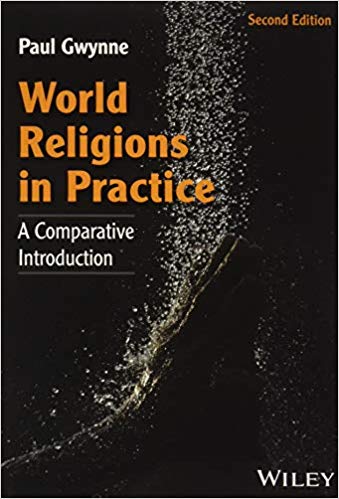AUTHOR, PURPOSE AND METHOD USED
Dr. Paul Gwynne is currently a lecturer in Religious Studies at the University of New South Wales, Sydney from 2001. He was ordained as a priest and served many years in Indonesia as a missionary, then in 1996, he finished a Doctorate of Theology in Religious Studies from Pontifical Gregorian University, Rome, Italy. Particularly, the book “World Religions in Practice” is a second edition and its first edition released in 2008.
In this book, Gwynne uses a method of comparative study among six major world religions Hinduism, Buddhism, Daoism, Judaism, Christianity and Islam. It brings out similarities and differences between all religions in a respectful and accurate manner, especially, how they are represented in practice.
REASON FOR SELECTING
This book suites for someone(or me) who needs a starting point to explore major world religions with a comparison which allows for a greater understanding. It is a piece of bundle filled with concise and precise information. More importantly, Gwynne put forth a brilliant effort and took a middle ground on expounding all religion practices. Once again, this book does not cover everything but a good place to start the journey of knowing religions.
ESSENCE OF THE BOOK
This book contains three sections with its chapters. Each sub-section engages with an individual theme which describes the practices of each religion. Thus, it has eleven themes or chapters.
The first part looks at how every religion gets the picture of divine experience and how it is accessed in real life. Moreover, in the first chapter, it opens up how religions use sacred images or not and its significance. And in the second theme, how the holy scriptures of religions play a vital in shaping their belief and practice.
The second part centers on social existence “within time and space.” It begins with a concise outline of religion ethics and continues to investigate three main rites of passage (birth, death and marriage) with their sacred ceremonies. This part also concentrates on the two basic needs of life food and clothing and explains their divine purpose given by religious faith.
Finally, part three helps to understand time and space used in religion with an aspect of holy meaning. For instance, purpose and the practices associated with annual calendars, festivals, sacred places, its exterior and interior designs and pilgrimage destinations.
NOTICEABLE THOUGHTS
The comparative analogy of this book helps to understand each religion as they are. For example, the written form of the Sanskrit word ‘om’ stands as a symbol for Hindus, in the same way, the Star of David for Jews and the cross for Christians. But it does not mean that religions are the same. Also, we have to be very cautious about areas of common ground since it can simply disregard the fact that each religion has unique features. In the widest sense, Daoism is truly different from Hinduism and Buddhism. Christianity is not the same as Judaism or Islam. For example, Hanukkah, Diwali and Easter are described as festivals of light, however, they are very different in their meanings and their specific combination of symbols, words and actions. The very similar idea applies to sacred scriptures and worshipping places of all religions.
EVALUATION AND RECOMMENDATIONS
Gwynne has shown concern in forests rather than in trees. Especially, how the woods appear from above and where their borders meet. He helped me to blur my conservative Christian lens and study religions with their affiliated lens. It can help to remove undermining views on other religions and creates respect, also, will work as a cure for the danger of generalization on religions. The areas of common grounds can serve as a good conversation starter with other faith followers. I highly recommend this book to a student or anyone who wants to understand a world major religion from a neutral ground.
“World Religions in Practice: A Comparative Introduction” by Paul Gwynne, 2nd edition, 2017.


BIBLIOGRAPHY
Gwynne, Paul. Special Divine Action: Key Issues in the Contemporary Debate. Roma: Gregorian University Press, 1996.
———. World Religions in Practice: A Comparative Introduction. 2 edition. Hoboken, NJ: Wiley, 2017.
“Paul Gwynne | LinkedIn.” Accessed July 10, 2019. https://www.linkedin.com/in/paul-gwynne-111a442a/.
